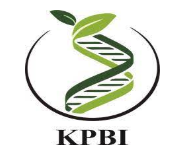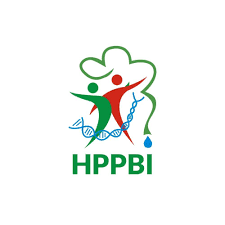MELATIH KETERAMPILAN KOMUNIKASI DAN KEMANDIRIAN BELAJAR SISWA MA MELALUI MODEL PENGAJARAN TERBALIK (RECIPROCAL TEACHING) PADA TOPIK PERTUMBUHAN DAN PERKEMBANGAN TUMBUHAN
DOI:
https://doi.org/10.15575/bioeduin.v9i1.4342Keywords:
Reciprocal Teaching, communication skills, the learning independence of biology subjectAbstract
References
Abdul, A. W. (2007). Metode dan Model-Model Mengajar. Bandung: Alfabeta.
Arikunto, S. (2012). Prosedur Penelitian. Jakarta; Rineka Cipta.
Baroody, A.J. (1993). Problem Solving, Reasoning, and Communicating, K-8. New York: Macmillan Publishing Compani.
Rachmayani, D. (2013). Penerapan Pembelajaran Reciprocal Teaching Untuk Meningkatkan Kemampuan Kominikasi Matematis dan Kemandirian Belajar Siswa. Tesis. Institutional Repositories and Scientific Journals. Universitas Pasundan.
Eggen P. dan Kauchak D. (2016). Educational Psychology: Windows on Classrooms, enhanced Pearson, eTex with Loose-Leaf Version.
Elaine B. J. (2002). Contextual Teaching & Learning, Bandung: Mizan Learning Center.
Garderen D.V. (2004). “Reciprocal Teaching as a Comprehension Strategy For Understanding Mathematical Word Problemsâ€. Reading and Writing Quarterly. New York: Taylor & Francis Group.
Joyoatmojo S. (2006). Belajar Mandiri: Bekal Untuk Menapak Jalan Menuju Belajar Sepanjang Hayat. Surakarta: UNS.
Kemendiknas. (2006). Permen No.22 Tahun 2006, Tentang Standar Isi, Jakarta: Kemendiknas.
Omari, H. A. et al., (2010). Using The Reciprocal Teaching Method by Teachers At Jordanian Schools. European Journal of Social Science Vol.15, Nomor 1. hal.7.
Ruseffendi, E.T. (2006). Pengantar Kepada Membantu Guru Mengembangkan Kompetensinya dalam Pengajaran Matematika Untuk Meningkatkan CBSA. Bandung; Tarsito Bandung
Rusman, (2012). Model-model Pembelajaran, Jakarta: Raja Grafindo Persada.
Surono, (2017). Pembelajaran Sains di Sekolah Dasar dan Menengah: Pembelajaran Kecakapan Hidup Berbasis Kontruktivisme. Buku Tidak Diterbitkan Universitas Negeri Malang.
Susanto, P. (2006). Penerapan Model Reciprocal Teaching Untuk Meningkatkan Kemampuan Komunikasi Matematis Siswa (Studi Pada Siswa Kelas VIII SMPN 19 Bandar Lampung Tahun Pelajaran 2016-2017). Skripsi. Digital Repository Universitas Lampung.
The Organisation for Economic Co-operation and Development (OECD). (1999). Measuring knowledge students and skills. France: (OECD. Diambil tanggal 23 Februari 2011 dari: http://www.oecd.org/dataoecd/45/32/33693997.pdf.)
Trianto. (2009). Mendesain Model Pembelajaran Inovatif Progresif, Jakarta: PT fajar Interpratama Mandiri.
Yesi E. Y. et. al. (2011). “Penerapan Pendekatan Pengajaran Terbalik (Reciprocal Teaching) untuk Meningkatkan Kemandirian Belajar Biologi Siswi Kelas VII-G SMPN 5 Karanganyar Tahun Pelajaran 2010/2011â€. UNS Journal, Vol. 3, Nomor 2, hal. 10. Mei 2011
Downloads
Published
How to Cite
Issue
Section
Citation Check
License
Authors who publish in Jurnal BIOEDUIN agree to the following terms:
- Authors retain copyright and grant the journal right of first publication with the work simultaneously licensed under a Attribution-ShareAlike 4.0 International (CC BY-SA 4.0) License that allows others to share the work with an acknowledgment of the work's authorship and initial publication in this journal.
- Authors are able to enter into separate, additional contractual arrangements for the non-exclusive distribution of the journal's published version of the work (e.g., post it to an institutional repository or publish it in a book), with an acknowledgment of its initial publication in this journal.
- Authors are permitted and encouraged to post their work online (e.g., in institutional repositories or on their website) prior to and during the submission process, as it can lead to productive exchanges, as well as earlier and greater citation of published work (See The Effect of Open Access).








